Terms such as mystical, ethereal, and otherworldly attempt to encapsulate the manta’s unique allure. Yet, before experiencing this enchantment firsthand, I would never have imagined the exhilaration that a manta ray encounter could evoke.
Australian marine scientist Dr Asia Haines explains this “buzz” as “a gateway drug to conservation.”
Her own euphoric manta encounter in 2008 propelled her to change careers and pursue marine science. For more than a decade now, Asia has been an integral part of Project Manta – a team investigating the population, biology and ecology of the enigmatic reef manta ray (Mobula alfredi) in eastern Australian waters.
She describes reef manta rays as ‘charismatic’, but is careful to clarify that this might be a human projection rather than an inherent trait of the species. Regardless, charismatic megafauna often become icons of their ecosystems.
“Manta rays have this incredible appeal. Everyone loves them. When people get hooked by their first experience, it presents a valuable platform for us to open up the conversation about marine conservation, as protecting manta rays requires protecting their entire ecosystem,” Asia says.
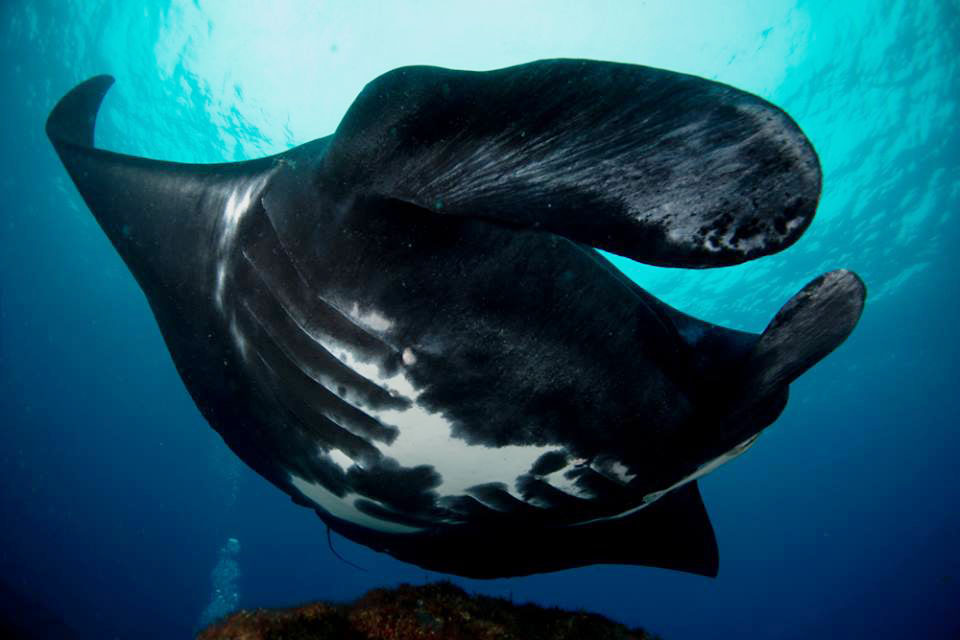
Project Manta was founded in 2007 by fellow Associate Professor Kathy Townsend, with research undertaken by a multi-disciplinary team headquartered at the University of the Sunshine Coast (UniSA). The team focuses on observing and recording key information on the life history and characteristics of reef manta rays in eastern Australian waters, aiming to establish baseline data that will inform global conservation efforts.
To better understand this research, I’ve joined Asia on the southernmost tip of the Great Barrier Reef at Queensland’s Lady Elliot Island (LEI). Known as a manta ‘hot spot’, the tiny coral cay hosts the largest known aggregation of reef manta rays on Australia’s east coast, visiting its crystalline, coral-rich waters during the winter months (May, June and July).
The Project Manta team visits LEI several times a year, conducting field research that includes observing and recording behaviours, taking samples of water and plankton, and measuring water currents, conductivity, temperature and depth. Recently, they have also begun deploying electronic tags, which provide fascinating data on dive behaviour, fine-scale movements, and the migration patterns along Queensland’s coastline.

What we know about reef manta rays
Reef manta rays are one of the world’s largest rays, inhabiting tropical, subtropical ocean waters globally. Until 2008, it was believed there was only one species, until researchers discovered there are, in fact, two – the reef manta ray and the giant oceanic manta ray. The giant oceanic manta ray (Manta birostris), with an impressive wing span reaching up to 7 metres can be found across global oceans, whereas the smaller reef manta ray (Mobula alfredi), with a wing span reaching up to 5 metres, lives in shallower waters and closer to coastlines in the Indo-Pacific region.
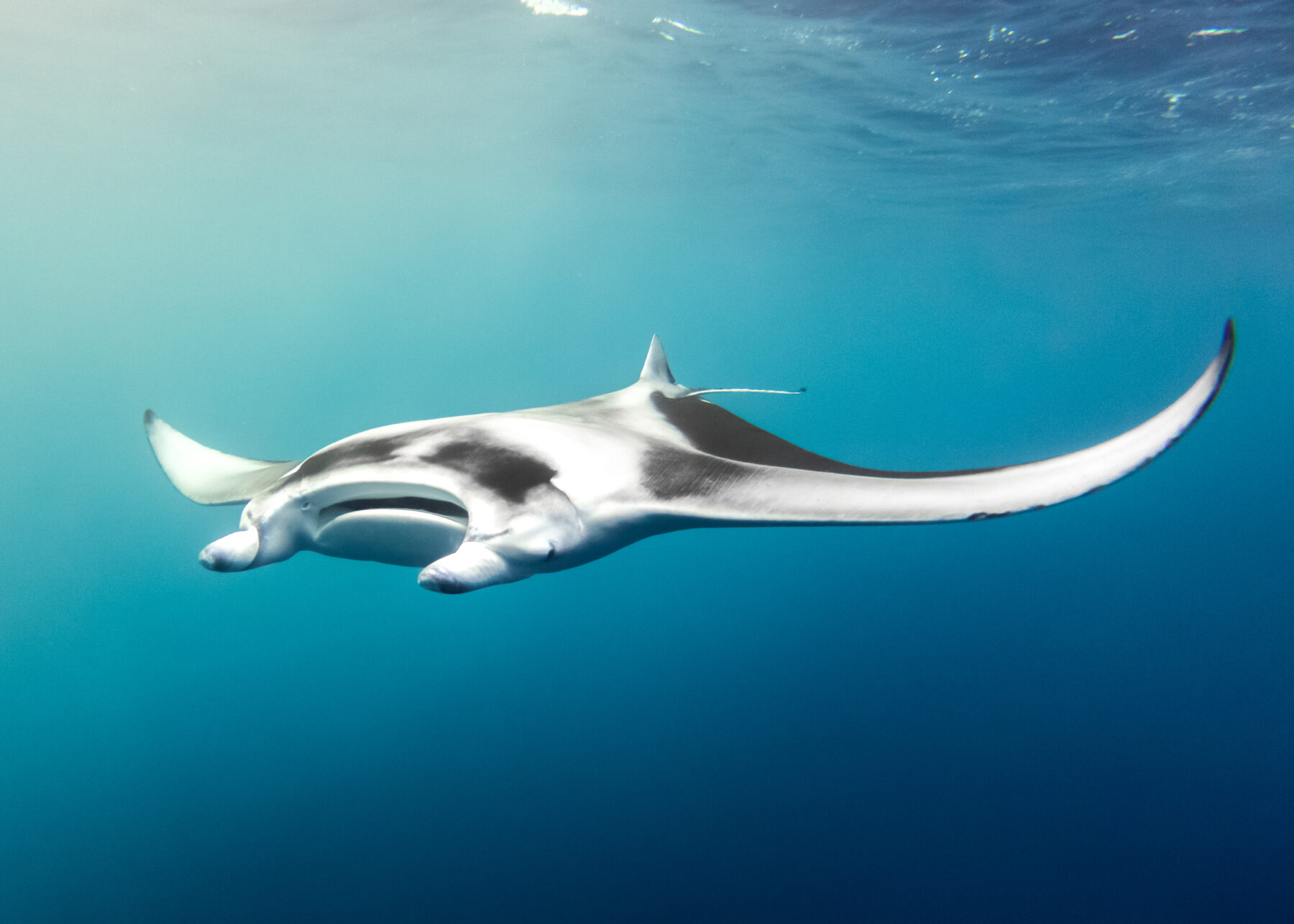
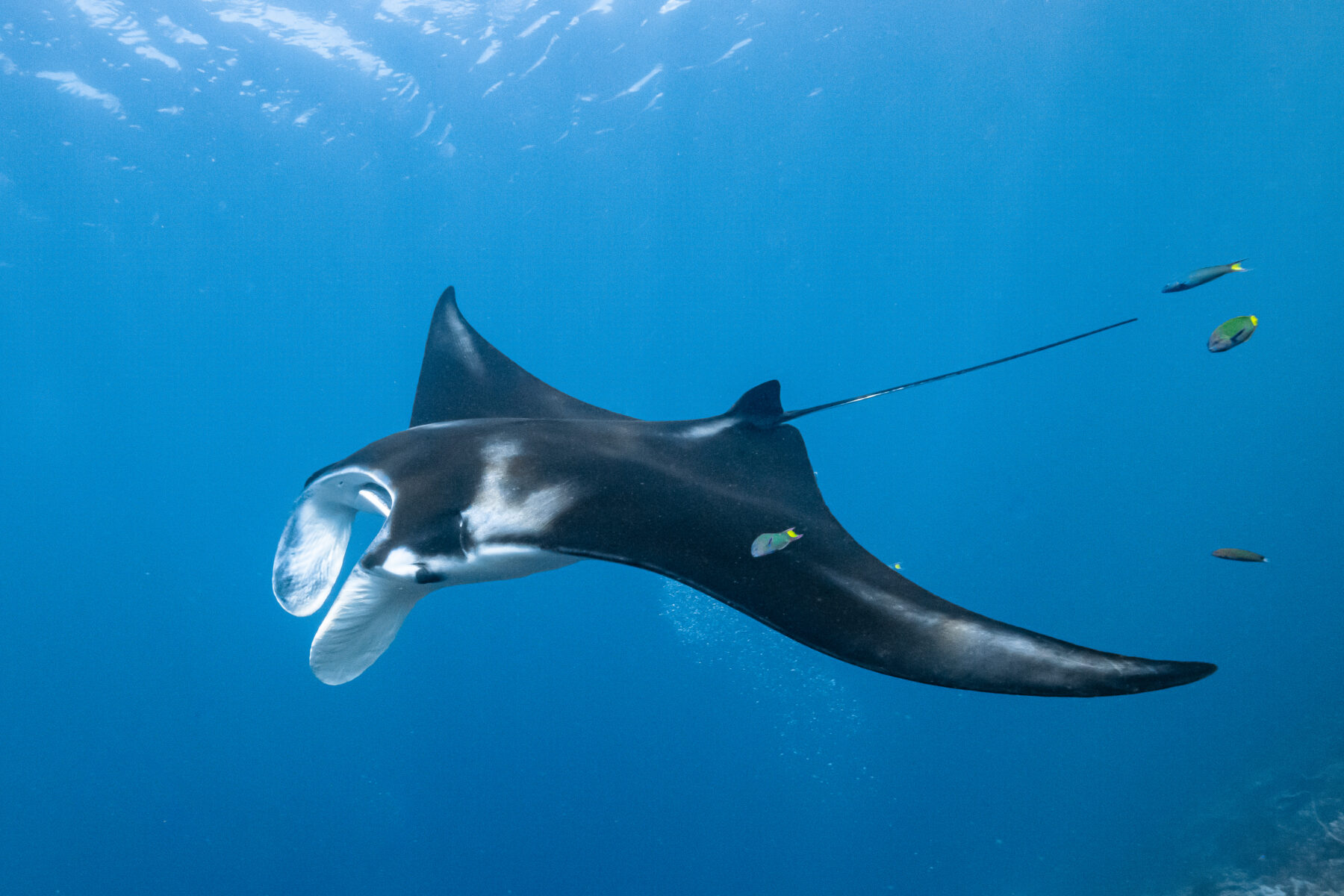
Characteristics
Scientists have discovered both species are highly intelligent, with the largest brain-to-body size ratio of any cold-blooded fish. They can recognise themselves in mirrors (similar to dolphins, elephants and primates) and create maps of their environments using sensory clues, which point to long-term memory capabilities.
Like sharks and other rays, mantas don’t sleep; they remain conscious throughout their lives, which researchers believe average around 50 years.
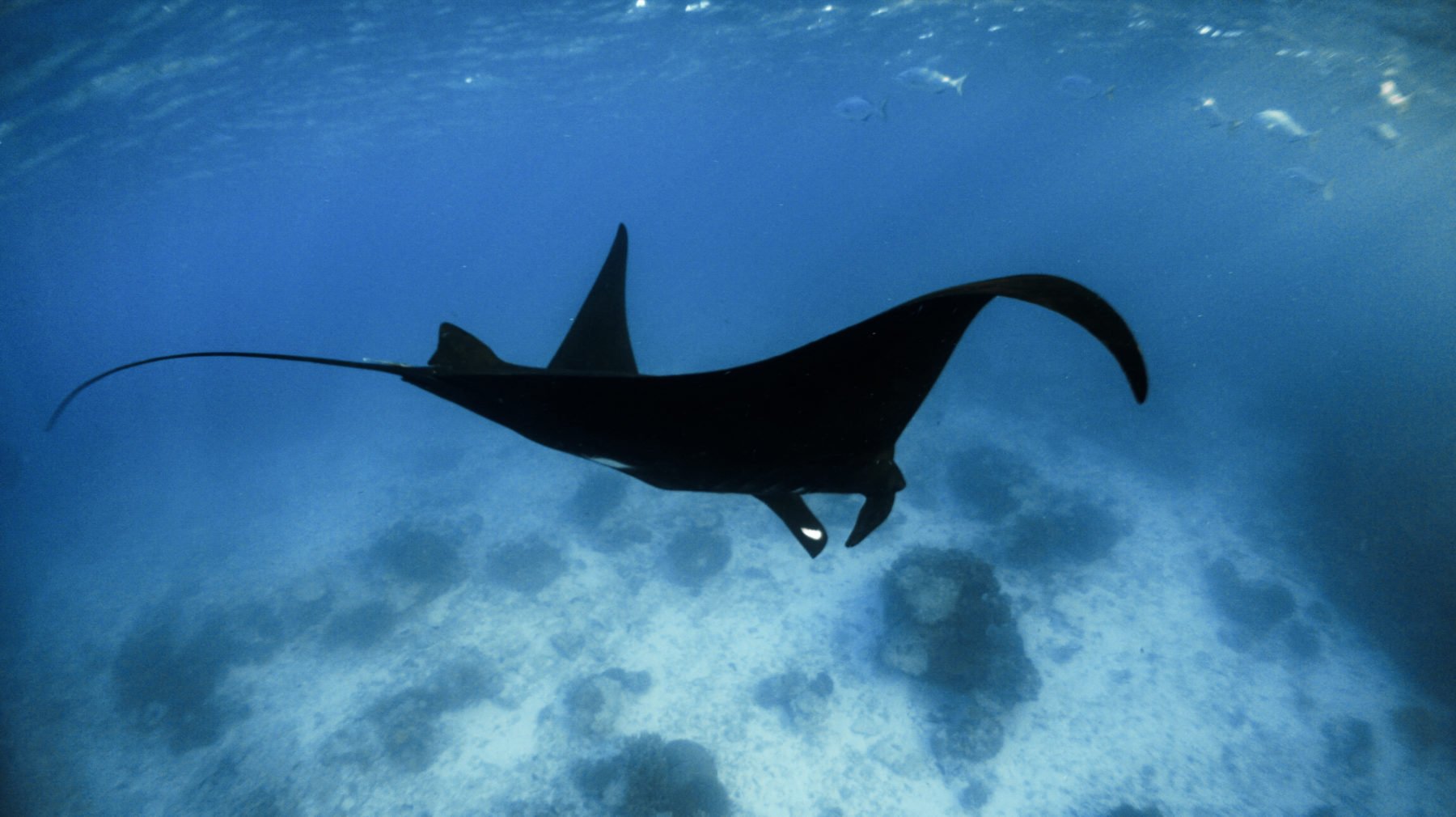
Reef mantas are distinguished by three primary colour patterns: black, white, or black-and-white. Their predominantly black dorsal sides provide camouflage against predators in the inky depths, while their creamy ventral sides blend seamlessly with the sunlight above when viewed from below. All mantas have their own distinct ventral markings, which are likened to fingerprints and serve to identify each individual, making the job for Project Manta, who record and track them via photo-ID, a little easier.
Also cruising the waters around LEI is the world’s only known pink manta ray. Affectionately dubbed Inspector Clouseau (in reference to the Pink Panther’s investigative sleuth), he was first spotted in 2015, with his rare pink hue believed to result from a pigment mutation (erythrism).
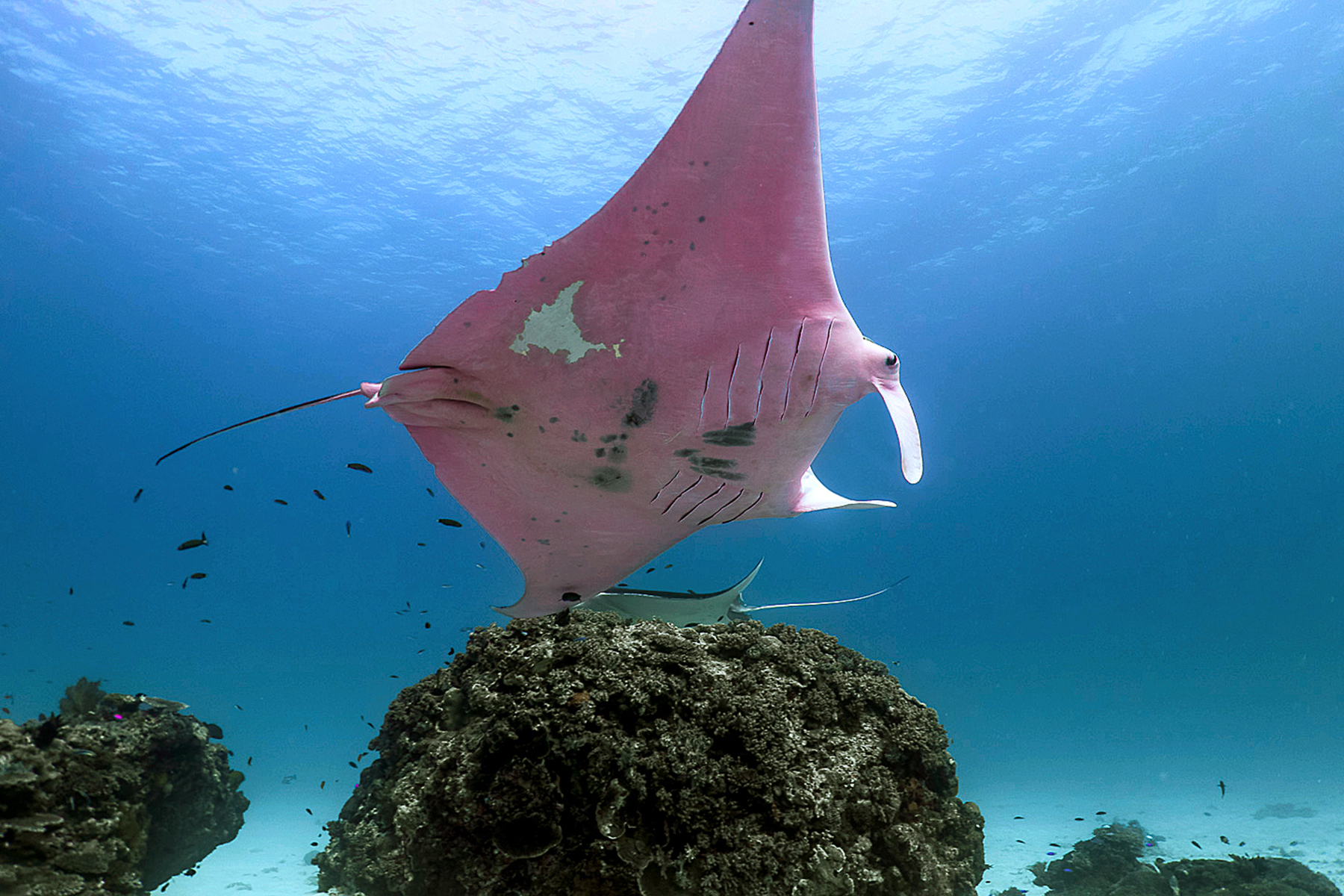
Feeding
As filter feeders, manta rays draw in zooplankton, larval crustaceans, and krill by travelling with their mouths wide open, performing manoeuvres like somersaults, and following each other in circles. Known as ‘chain feeding,’ this behaviour creates a water vortex that traps microorganisms. These are then scooped into their mouths and sifted over grate-like gill rakers, which pushes the food back so it can be consumed.
Asia says satellite driven data has revealed curious evidence of mantas making deep vertical dives into colder, deeper waters. These dives have reached depths of up to 711 meters — which is deeper than scientists previously imagined. Asia hypothesises that this is likely a feeding technique to access higher concentrations of food in deeper water columns, suggesting surface feeding can be likened to “snacking”, while deeper dives “eating at the buffet.”

Cleaning
One of the most popular sites for mantas at LEI is Lighthouse Bommies, a reef outcrop surrounded by sand and within swimming distance from shore. Scientists (and citizens) frequently observe mantas congregating here during peak winter months while waiting their turn for small ‘cleaner’ fish to remove dead, damaged skin and parasites from their bodies. Mantas have been observed staying remarkably still during this process, utilising the strong water current to wash over their gills as they hover. This provides an ideal spot for a manta encounter.
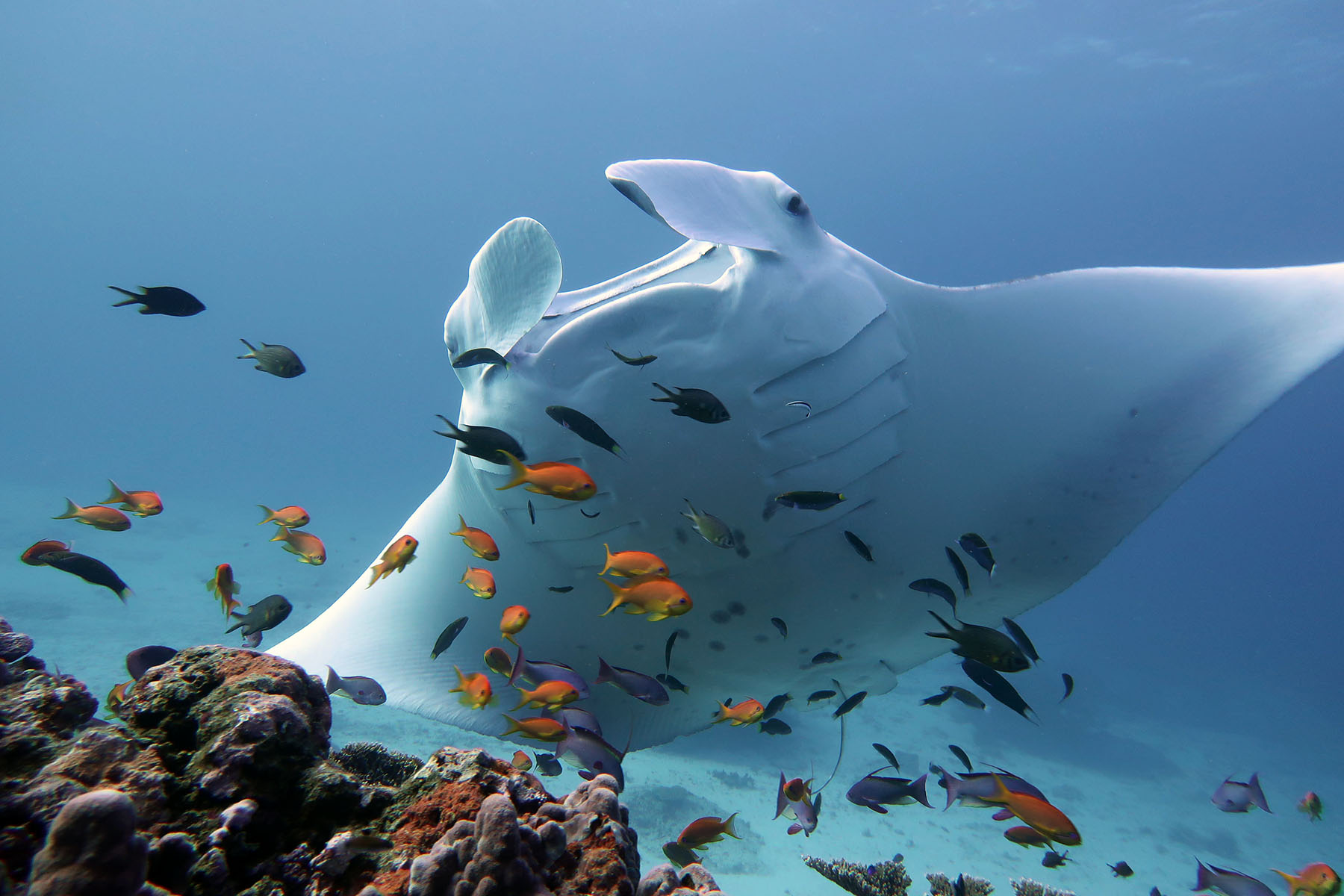
Reproduction
Asia says a manta courtship chain is one of the most fascinating and dynamic behaviours to witness in the wild, and the team has been fortunate to record it numerous times at LEI. It begins with a female releasing pheromones to attract a suitable mate. As males approach, she zooms off, igniting a chase. More males join the chain, with the female challenging their prowess by twisting, darting, weaving, and even propelling herself out of the water at high speed. The chase can last from hours through to days. However, once only one suitor remains, the mating process is completed in about 30 seconds.
Females may lead these chases over consecutive days to collect sperm from multiple males, as sperm can be stored (sometimes for years) until it’s decided the conditions are right for her to fertilise her eggs. Manta rays are dimorphic, with females larger than males, and can be identified by the cloaca between the females’ ventral fins, while sexually mature males have two claspers extending beyond their pelvic fins.
Reaching sexual maturity around 8-10 years old, females usually carry a pregnancy (lasting 12-13 months) only every two years. Birthed as fully-formed juveniles, manta ray pups survive without any parental care. However, where and when is a question that continues to mystify researchers. Asia notes that, while pregnant mantas are regularly recorded at cleaning stations on LEI, little evidence exists regarding pupping grounds, and sightings of pups in the wild are rare.
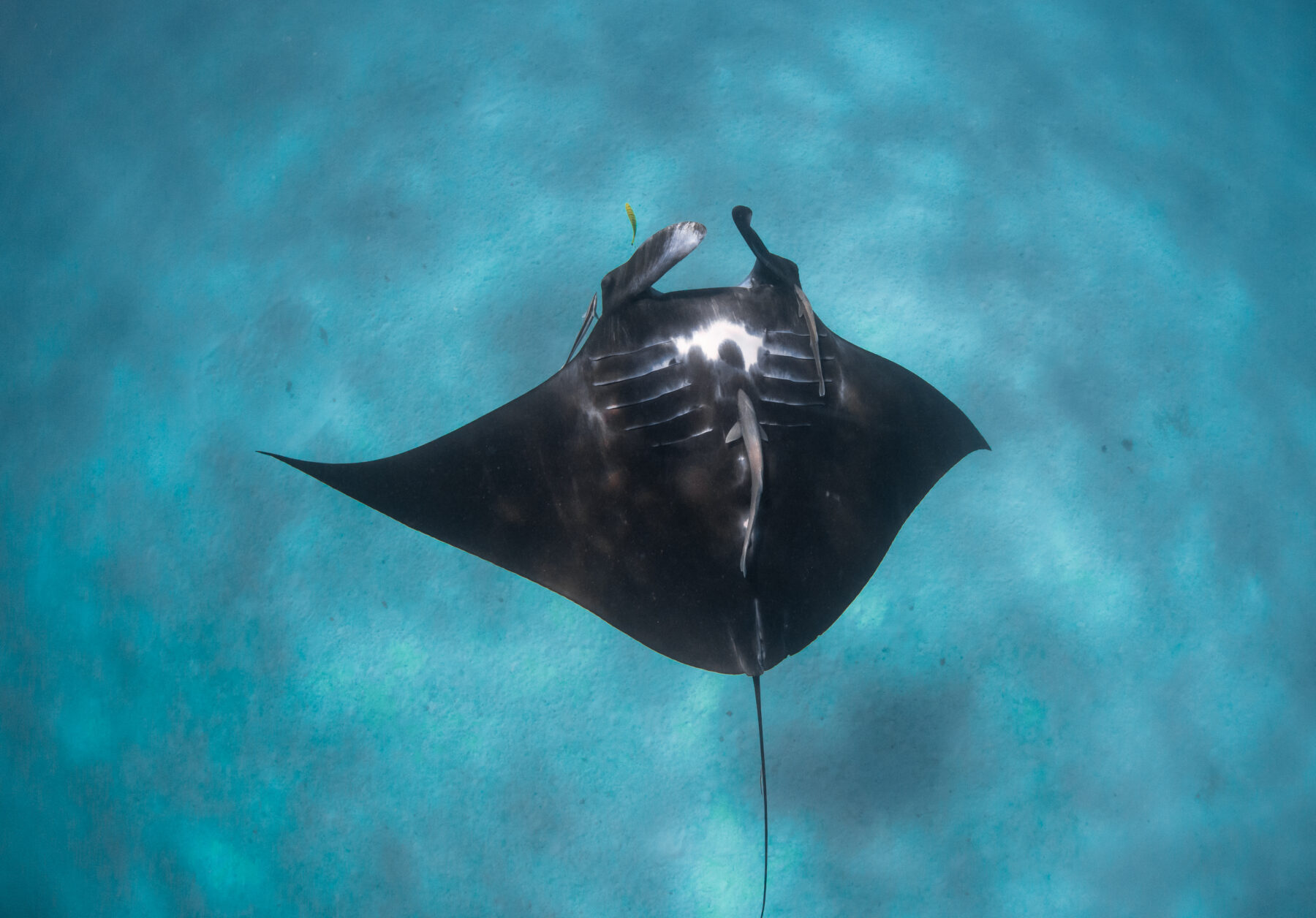
Threats
While much remains to be discovered about manta rays, one undeniable truth is their alarming global decline. Currently listed as ‘vulnerable’ on the IUCN Red List of Threatened Species, despite increased knowledge from initiatives like Project Manta, more detailed information is urgently needed.
In nature, sharks and orcas are natural predators of manta rays, but their greatest threat comes from humans. Because of their long lives and slow reproduction rates, the threat from overfishing is their most critical. Despite protection under the Convention on Migratory Species treaty, in place since 2011, and a widespread fishing ban, mantas are still hunted for their meat and gill plates. Thousands of manta rays also fall victim each year to the Chinese medicine trade – valued at an estimated $30 million – regardless of the lack of scientific evidence validating the medicinal value of gill plates.
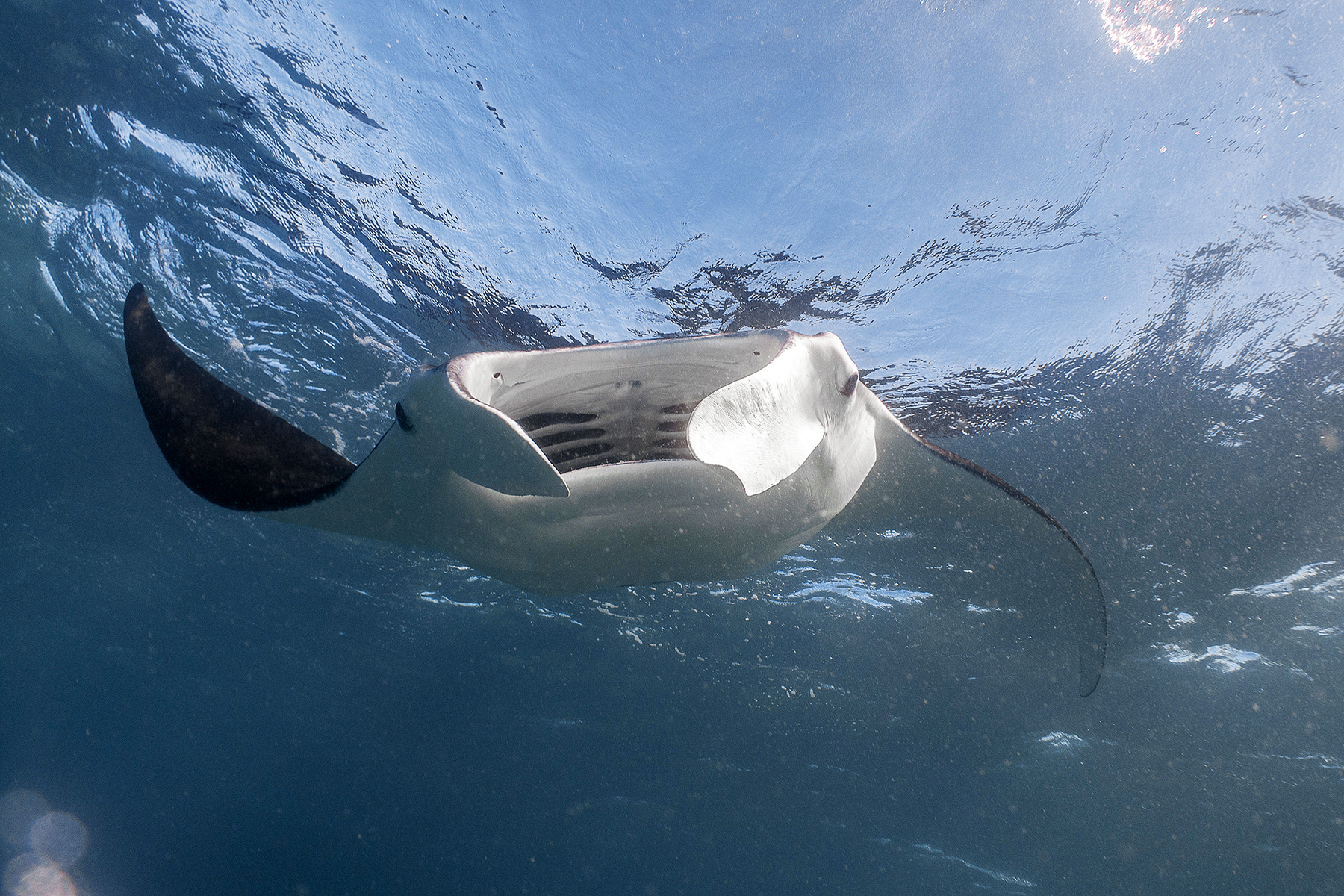
The role of eco-tourism
The far more lucrative reason to protect manta rays, Asia argues, is eco-tourism. With the magnetic allure of manta rays and the ‘buzz’ from the first encounter driving interest, a living manta can generate millions in revenue, whereas one caught and killed for its meat and gill plates alone is worth a mere fraction of that.
Indonesia, once home to the world’s largest manta ray fishery – until the practice was banned in 2014 – is now ranked second in manta ray tourism, which is estimated to be worth $15 million per year. Additionally, a study published in the open access journal PLoS ONE estimates that manta rays are worth $140 million a year in tourism across 23 countries, significantly outweighing the worth of manta ray gill plates.
At Lady Elliot Island Eco-Resort, known as the ‘Home of the Manta Ray’, it’s no coincidence the busiest months for bookings are during manta season. One of my stay’s highlights—aside from the dopamine rush of seeing mantas—was the daily buzz around the dinner table, where stories and photos were shared. Hearing descriptions like ‘hypnotic’, ‘euphoric’, and even ‘godly’ capturing the distinct natural high of these mesmerising encounters serving as proof the “gateway drug to conservation” was working.
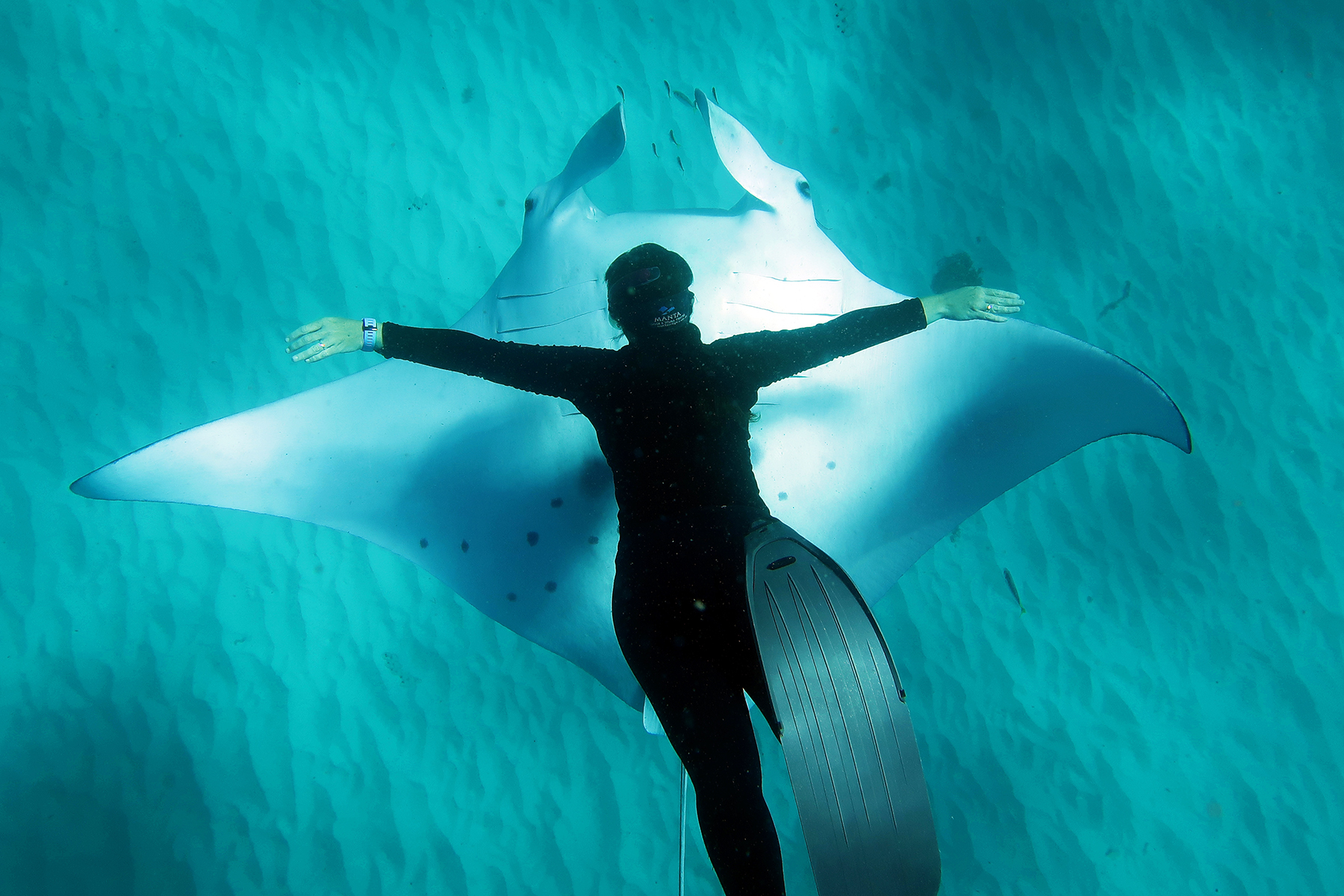
How citizen science is helping
Project Manta recognizes the potential of engaging citizen scientists to collect data in aiding in the observation and understanding of these enigmatic marine animals. Since the project’s inception, over 10,000 photos have been logged through photo-ID, providing researchers with invaluable, and often critical, insights into frequented habitats and distinctive behaviours. This data helps foster conversations about manta ray conservation and protection globally.
“Knowledge of manta ray distribution and movement patterns is vital for conservation purposes,” Asia explains. “The reef manta ray is known to occur and aggregate at several locations around the Australian coastline. However, these vast and unpopulated coastlines provide challenges for research, as we simply do not have the resources to investigate the whole area ourselves.”
Logging sightings and sharing information with Project Manta is straightforward, and if you’re fortunate enough to spot a manta ray that hasn’t been recorded, you may even have the privilege of naming it.
The writer travelled as a guest of Visit Queensland and Lady Elliot Island Eco Resort.

